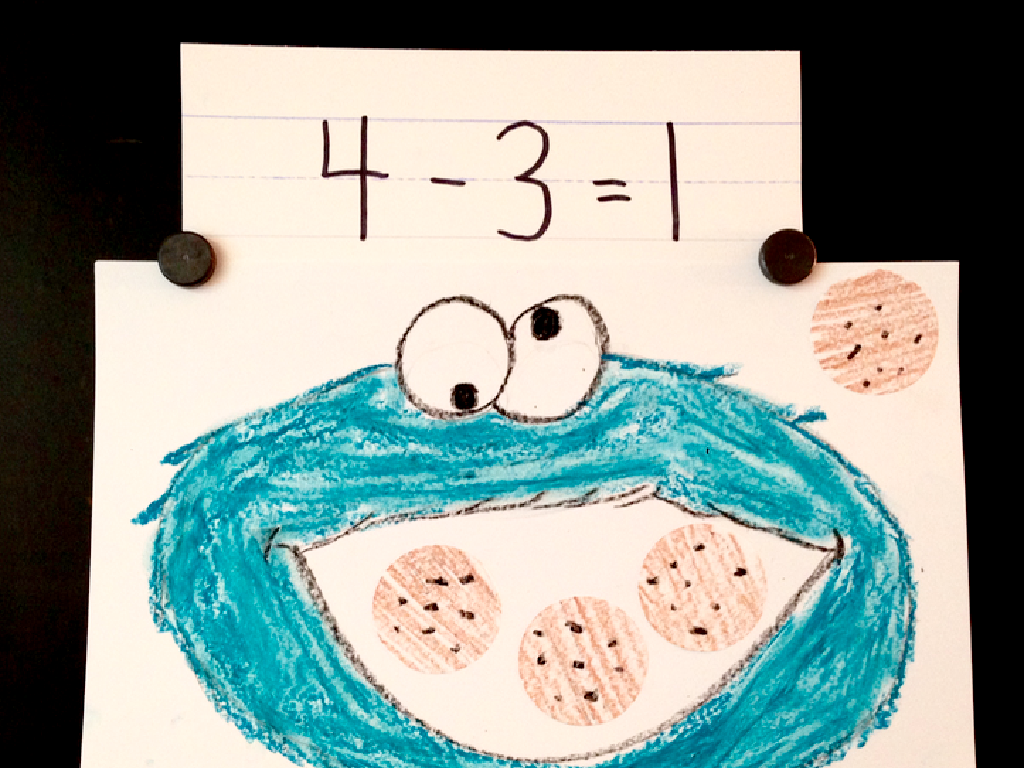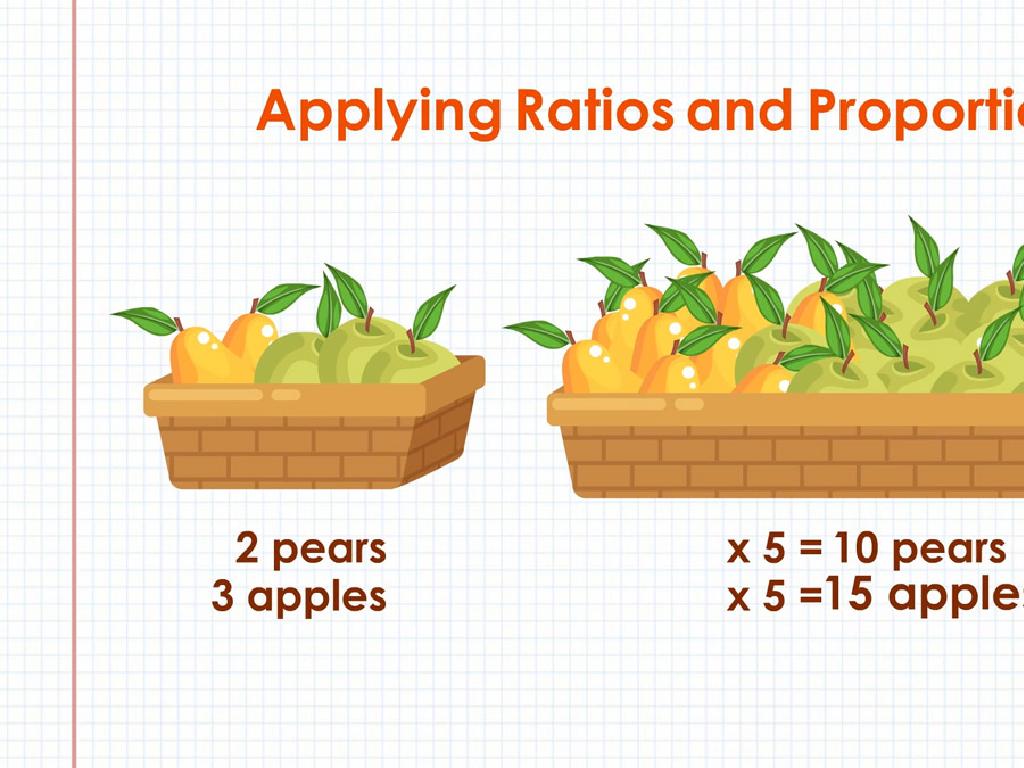Multiple-Meaning Words With Pictures
Subject: Language arts
Grade: Fourth grade
Topic: Multiple-Meaning Words
Please LOG IN to download the presentation. Access is available to registered users only.
View More Content
Exploring Multiple-Meaning Words
– What are multiple-meaning words?
– Words that sound the same but have different meanings.
– Words with several meanings
– ‘Bat’ can mean a flying mammal or a baseball club.
– Importance of multiple-meaning words
– Knowing them improves reading comprehension.
– Examples in sentences
– ‘I love reading books.’ / ‘The table has four books.’
|
This slide introduces the concept of multiple-meaning words, which are words that have more than one meaning. Understanding these words is crucial for reading comprehension and effective communication. For example, the word ‘bat’ can refer to a piece of sports equipment or an animal. It’s important for students to learn about them to avoid confusion when encountering such words in different contexts. Provide examples and encourage students to think of other multiple-meaning words, using pictures to illustrate the different meanings. This will help them remember and understand the concept better.
Discovering Words: Multiple Meanings
– Words can be tricky!
– Same sound, different meanings
– Example: ‘bat’ – animal vs. sports
– ‘bat’ can mean a flying mammal or a tool in baseball
– Pictures help us understand
– Visuals clarify the meaning in context
|
This slide introduces students to the concept of multiple-meaning words, which are words that sound the same but have different meanings. The word ‘bat’ is used as an example to illustrate this concept, showing that it can refer to both an animal and sports equipment used in games like baseball. Emphasize the importance of context in determining the meaning of a word. Encourage students to think of other multiple-meaning words and use pictures or drawings to differentiate the meanings. This will help them remember and understand that the meaning of a word can change based on how it is used in a sentence.
Context Clues: Understanding Multiple-Meaning Words
– Multiple meanings of ‘bark’
– ‘Bark’ can mean the sound a dog makes or the outer layer of a tree.
– Use context to find meaning
– Clues in a sentence tell us which ‘bark’ is meant.
– ‘Bark’ in different sentences
– Example: ‘The dog’s bark was loud.’ vs ‘The tree’s bark was rough.’
– Class activity with ‘bark’
|
This slide introduces the concept of multiple-meaning words using ‘bark’ as an example. Explain that some words like ‘bark’ have more than one meaning and context clues within a sentence help us determine the correct meaning. Provide sentences that use ‘bark’ in different ways and ask students to identify the meaning based on context. For the class activity, have students come up with their own sentences using ‘bark’ and let classmates guess the meaning. This interactive approach will enhance their understanding of context clues and multiple-meaning words.
Exploring Multiple-Meaning Words: ‘Bark’
– ‘Bark’ related to a tree
– The outer covering of a tree trunk
– ‘Bark’ as a dog’s sound
– The sound a dog makes
– Understanding ‘bark’ in sentences
– How is ‘bark’ used differently here?
– ‘Bark’ has more than one meaning
|
This slide introduces the concept of multiple-meaning words using the word ‘bark’ as an example. Students will explore how ‘bark’ can refer to the outer layer of a tree as well as the sound a dog makes. By examining the sentences provided, students can see the word used in different contexts and learn to use surrounding information to determine the correct meaning. Encourage students to think of other words with multiple meanings and use pictures or real-life examples to illustrate the different definitions. This will help them understand that many words in English have more than one meaning and that context is key to figuring out which meaning is intended.
Practice Time: The Word ‘Bark’
– Explore meanings of ‘bark’
– ‘Bark’ can mean the sound a dog makes or the outer layer of a tree.
– Work in pairs for context clues
– Help each other figure out which meaning fits.
– Discuss ‘bark’ in sentences
– Use sentences to determine how ‘bark’ is used.
– Share findings with the class
|
This activity is designed to help students understand that some words in English, like ‘bark’, have multiple meanings. By working in pairs, students will engage in collaborative learning to use context clues within sentences to determine the correct meaning of ‘bark’. Encourage them to discuss and debate the meaning based on the context. Afterward, each pair will share their sentences and explain the meaning they’ve deduced with the rest of the class. This will not only reinforce their understanding of multiple-meaning words but also enhance their speaking and listening skills. As a teacher, prepare to provide guidance and additional examples if students struggle with the concept.
Exploring Multiple-Meaning Words: ‘Right’
– ‘Right’ as a direction
– Example: I write with my right hand.
– ‘Right’ meaning correct
– Example: It is right to be kind to others.
– Discussing different meanings
– Importance of context
– Context determines the meaning of ‘right’.
|
This slide focuses on the word ‘right’ as an example of a multiple-meaning word. Students will see how the meaning of ‘right’ can change based on context. The first meaning relates to direction, as in using the right hand to write. The second meaning refers to being morally good or correct. Encourage students to discuss how they determine the meaning of ‘right’ in different sentences. Emphasize the importance of context in understanding which meaning is intended. As an activity, students can create sentences using ‘right’ in different contexts or draw pictures to illustrate the meanings.
Class Activity: Word Detective
– Become a word detective!
– Find multi-meaning words in your book
– Look for words that can have more than one meaning
– Create sentences for each meaning
– Use the word in two sentences to show different meanings
– Share your discoveries with the class
|
In this engaging class activity, students will act as detectives searching for words with multiple meanings within their chosen books. They will then craft sentences that illustrate the different meanings of each word. For example, the word ‘bat’ can refer to a flying mammal or a piece of sports equipment. Encourage creativity and provide assistance in identifying such words if needed. After creating their sentences, students will have the opportunity to share their findings with the class, enhancing their understanding of context and vocabulary. Possible variations of the activity could include drawing pictures to represent the different meanings, using the words in a short story, or creating a classroom display of the words and their various meanings.
Review and Share: Multiple-Meaning Words
– Review words from today’s lesson
– Share your own sentences
– Create a sentence for each meaning of the word
– Guess meanings from context
– Use clues from the sentence to guess the word’s meaning
– Discuss the different meanings
– Talk about how the same word can have different meanings
|
This slide is meant to consolidate the learning from today’s lesson on multiple-meaning words. Students will actively participate by reviewing the words discussed in class and using them in their own sentences. This exercise will help reinforce their understanding of how context can change the meaning of a word. Encourage students to listen to each other’s sentences and use context clues to guess the meanings. This interactive session will not only test their comprehension but also enhance their critical thinking skills. As a teacher, facilitate the discussion by providing feedback and guiding students through the different meanings each word can have.
Game Time: Word Charades
– Act out multi-meaning words
– Classmates guess meanings
– Discuss each word’s meanings
– After guessing, talk about how the word can mean different things.
– Enjoy learning with charades!
|
This slide introduces a fun classroom activity, Word Charades, aimed at helping students understand and engage with multiple-meaning words. Students will take turns acting out the different meanings of a word without speaking, while their classmates try to guess both the word and its meanings. After each round, have a brief discussion about the word’s different meanings to reinforce understanding. This activity not only aids in vocabulary development but also promotes active learning and critical thinking. As a teacher, prepare a list of multiple-meaning words suitable for the fourth-grade level and guide the students through the activity, ensuring that each student has a chance to participate.
Mastering Multiple-Meaning Words!
– Congratulations on your hard work!
– Remember, context reveals meaning
– Words can have different meanings depending on the sentence they’re in
– Practice makes perfect word wizards
– The more you read and write, the better you’ll get
– Keep exploring words and their uses
|
This slide wraps up the lesson on multiple-meaning words, celebrating the students’ efforts and reinforcing the importance of context in understanding word meanings. Encourage the students to continue reading and writing, using context clues to determine the meanings of words with multiple interpretations. Remind them that becoming proficient with multiple-meaning words is a process that improves with practice. Suggest that they play word games, engage in writing exercises, and read a variety of texts to become ‘word wizards’. Acknowledge their progress and motivate them to keep learning and exploring language.






